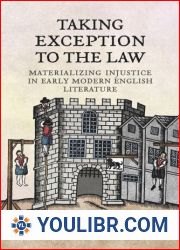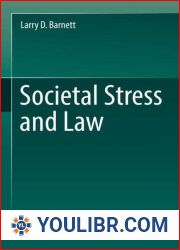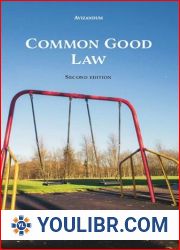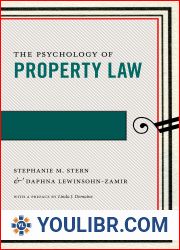
BOOKS - The Parthenon Marbles and International Law

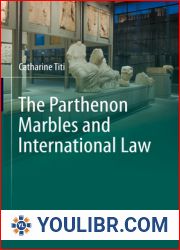
US $8.91

144908

144908
The Parthenon Marbles and International Law
Author: Catharine Titi
Year: May 25, 2023
Format: PDF
File size: PDF 15 MB
Language: English
Year: May 25, 2023
Format: PDF
File size: PDF 15 MB
Language: English
The Parthenon marbles case is the most famous international cultural heritage dispute concerning repatriation of looted antiquities, the Parthenon marbles in the British Museum's 'Elgin Collection'. The case has polarised observers ever since Elgin had the marbles hacked out of the ancient temple at the turn of the 19th century in Ottoman-occupied Athens. In 1816, a debt-stricken Elgin sold the marbles to the British government, which subsequently entrusted them to the British Museum, where they have remained since then.Much ink has been spilled on the Parthenon marbles. The ethical and cultural merits of their repatriation have been fiercely debated for years. But what has generally not been considered are the legal merits of their return in light of contemporary international law. This book is the first in legal scholarship to provide an international law perspective of the cause celebre of international cultural heritage disputes and, in doing so, to clarify the new customary international law on the return of cultural property unlawfully removed from its original context.The book, which includes a foreword by Andrew Wallace-Hadrill, is a unique reference work on the legal case for the return of the Parthenon marbles and the new normative framework for the protection of cultural heritage.
El caso de las canicas del Partenón es la disputa internacional más famosa sobre el patrimonio cultural, relativa a la repatriación del botín de antigüedades, los mármol del Partenón en la colección del Museo Británico 'Elgin Collection'. El caso ha polarizado a los observadores desde que Elgin talló canicas de un antiguo templo a principios del siglo XIX en la Atenas ocupada por los otomanos. En 1816, Elgin, asesinado por deudas, vendió las canicas al gobierno británico, que posteriormente las confió al Museo Británico, donde permanecieron desde entonces. Se derramó mucha tinta sobre los mármol del Partenón. Las virtudes éticas y culturales de su repatriación se han debatido ferozmente durante muchos años. Pero lo que no se ha considerado en general son las ventajas jurídicas de su regreso a la luz del derecho internacional contemporáneo. Este libro es el primero de la ciencia jurídica que expone una perspectiva jurídica internacional sobre la causa del litigio sobre el patrimonio cultural internacional, al tiempo que explica el nuevo derecho internacional consuetudinario sobre la devolución de bienes culturales, ilegalmente excluido de su contexto original. El libro, que incluye el prefacio Andrew Wallace-Hadrill, es un trabajo de referencia único en un caso legal sobre la devolución de los mármol del Partenón y un nuevo marco normativo para proteger el patrimonio cultural.
L'affaire des marbres du Parthénon est la plus célèbre controverse internationale sur le patrimoine culturel concernant le rapatriement des antiquités volées, des marbres du Parthénon dans la collection « Elgin Collection » du British Museum. L'affaire a polarisé les observateurs depuis qu'Elgin a découpé les marbres d'un ancien temple au début du XIXe siècle à Athènes occupée par les Ottomans. En 1816, Elgin, assassiné par des dettes, a vendu des marbres au gouvernement britannique, qui les a ensuite confiés au British Museum, où ils sont restés depuis. Beaucoup d'encre a coulé sur les marbres du Parthénon. Les vertus éthiques et culturelles de leur rapatriement font l'objet de vifs débats depuis de nombreuses années. Mais ce qui n'a pas été considéré dans l'ensemble, ce sont les avantages juridiques de leur retour à la lumière du droit international moderne. Ce livre est le premier de la science juridique à exposer le point de vue juridique international sur la cause du différend sur le patrimoine culturel international, tout en expliquant le nouveau droit international coutumier sur la restitution des biens culturels, illégalement exclu de son contexte d'origine. Le livre, qui comprend une préface d'Andrew Wallace-Hadrill, est un ouvrage de référence unique dans une affaire juridique concernant le retour des marbres du Parthénon et un nouveau cadre réglementaire pour la protection du patrimoine culturel.
Il caso dei marmori del Partenone è il più famoso dibattito internazionale sul patrimonio culturale relativo al rimpatrio delle antichità rubate, marmo del Partenone nella collezione del British Museum «Elgin Collection». Il caso ha polarizzato gli osservatori da quando Elgin ha inciso i marmori da un antico tempio alla fine del XIX secolo ad Atene. Nel 1816 Elgin, ucciso da debiti, vendette i marmi al governo britannico, che li affidò al British Museum, dove rimasero da allora. C'è molto inchiostro sui marmi del Partenone. Le virtù etiche e culturali del loro rimpatrio sono state discusse con ferocia negli anni. Ma ciò che in generale non è stato considerato erano i vantaggi legali del loro ritorno alla luce del diritto internazionale moderno. Questo libro è il primo della scienza giuridica a presentare un punto di vista giuridico internazionale sulla causa del contenzioso sul patrimonio culturale internazionale, mentre spiega il nuovo diritto internazionale convenzionale sulla restituzione dei beni culturali, illegalmente escluso dal suo contesto originale. Il libro, che include la prefazione di Andrew Wallace-Hadrill, è un lavoro di riferimento unico in materia di recupero dei marmi del Partenone e un nuovo quadro normativo per la tutela del patrimonio culturale.
Дело о мраморах Парфенона - самый известный международный спор о культурном наследии, касающийся репатриации награбленных древностей, мраморов Парфенона в коллекции Британского музея ' Elgin Collection '. Дело поляризовало наблюдателей с тех пор, как Элгин вырезал мраморы из древнего храма на рубеже XIX века в оккупированных османами Афинах. В 1816 году убитый долгами Элгин продал мраморы британскому правительству, которое впоследствии доверило их Британскому музею, где они и оставались с тех пор. На мраморы Парфенона пролилось много чернил. Этические и культурные достоинства их репатриации ожесточенно обсуждались в течение многих лет. Но что в целом не рассматривалось, так это юридические преимущества их возвращения в свете современного международного права. Эта книга является первой в юридической науке, в которой излагается международно-правовая точка зрения на причину спора о международном культурном наследии и при этом разъясняется новое обычное международное право о возвращении культурных ценностей, незаконно исключенное из его первоначального контекста. Книга, включающая предисловие Эндрю Уоллеса-Хадрилла, является уникальной справочной работой по юридическому делу о возвращении мраморов Парфенона и новой нормативной базе для защиты культурного наследия.
Der Fall der Parthenon-Murmeln ist der bekannteste internationale Streit um das Kulturerbe um die Rückführung geraubter Antiquitäten, Parthenon-Murmeln in die Sammlung des British Museum 'Elgin Collection'. Der Fall polarisiert Beobachter, seit Elgin um die Wende zum 19. Jahrhundert im osmanisch besetzten Athen Marmore aus einem antiken Tempel schnitzte. Im Jahr 1816 verkaufte Elgin, der von Schulden getötet wurde, die Murmeln an die britische Regierung, die sie später dem British Museum anvertraute, wo sie seitdem geblieben sind. Auf die Murmeln des Parthenons ist viel Tinte geflossen. Über die ethischen und kulturellen Vorzüge ihrer Rückführung wird seit Jahren heftig diskutiert. Was aber im Großen und Ganzen nicht bedacht wurde, waren die rechtlichen Vorteile ihrer Rückkehr im Lichte des modernen Völkerrechts. Dieses Buch ist das erste in der Rechtswissenschaft, das die völkerrechtliche Perspektive auf die Ursache des Streits um das internationale Kulturerbe darlegt und gleichzeitig das neue Völkergewohnheitsrecht über die Rückgabe von Kulturgut, das unrechtmäßig aus seinem ursprünglichen Kontext ausgeschlossen wurde, erläutert. Das Buch, das ein Vorwort von Andrew Wallace-Hadrill enthält, ist ein einzigartiges Nachschlagewerk über den Rechtsfall der Rückgabe der Parthenon-Murmeln und einen neuen regulatorischen Rahmen zum Schutz des kulturellen Erbes.
The Parthenon marbles case is the most famous international cultural heritage dispute concerning repatriation of looted antiquities, the Parthenon marbles in the British Museum's 'Elgin Collection'. The case has polarised observers ever since Elgin had the marbles hacked out of the ancient temple at the turn of the 19th century in Ottoman-occupied Athens. In 1816, a debt-stricken Elgin sold the marbles to the British government, which subsequently entrusted them to the British Museum, where they have remained since then.Much ink has been spilled on the Parthenon marbles. The ethical and cultural merits of their repatriation have been fiercely debated for years. But what has generally not been considered are the legal merits of their return in light of contemporary international law. This book is the first in legal scholarship to provide an international law perspective of the cause celebre of international cultural heritage disputes and, in doing so, to clarify the new customary international law on the return of cultural property unlawfully removed from its original context.The book, which includes a foreword by Andrew Wallace-Hadrill, is a unique reference work on the legal case for the return of the Parthenon marbles and the new normative framework for the protection of cultural heritage.
O caso dos mármores do Parthenon é a mais famosa disputa internacional sobre a herança cultural sobre o repatriamento de antiguidades, mármores do Parthenon na coleção do Museu Britânico 'Elgin Coleção'. O caso polarizou os observadores desde que Elgin cortou os mármores de um antigo templo na virada do século XIX, em Atenas, ocupada pelos otomanos. Em 1816, Elgin, que se endividou, vendeu mármores ao governo britânico, que depois os confiou ao Museu Britânico, onde permaneceram desde então. Há muita tinta nos mármores do Partenon. As virtudes éticas e culturais de sua repatriação foram discutidas de forma feroz durante anos. Mas o que em geral não foi considerado são os benefícios legais de seu retorno à luz do direito internacional contemporâneo. Este livro é o primeiro da ciência jurídica a apresentar um ponto de vista jurídico internacional sobre a causa do diferendo sobre a herança cultural internacional, explicando o novo direito internacional convencional sobre a devolução de bens culturais, excluído ilegalmente do seu contexto original. O livro, que inclui a introdução de Andrew Wallace-Hadrill, é um trabalho único de referência legal sobre a recuperação dos mármores do Parthenon e um novo marco regulatório para a proteção do patrimônio cultural.

























